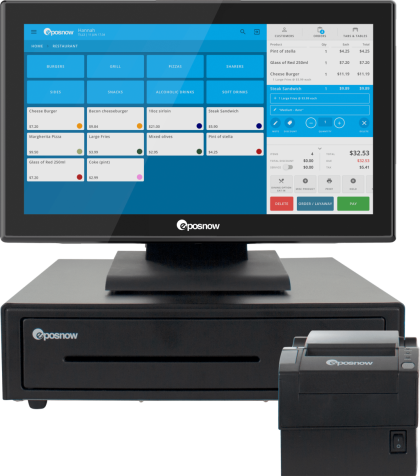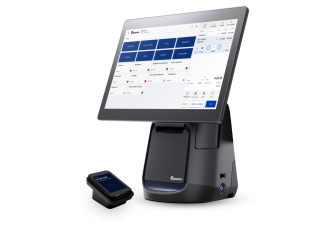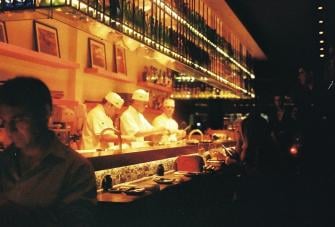Restaurant Social Media Strategy + Examples
As a restaurant owner, you may wonder how to use social media to win new customers. After all, with so many businesses competing for attention online, it can be tough to stand out from the crowd.
Fortunately, restaurant social media marketing is not as difficult as it may seem. By following a few simple strategies, you can quickly start attracting new diners to your restaurant.
So we're giving you the 411 on all things restaurant social media marketing, including:
-
The best social media channels for restaurant promotion
-
Tips and tricks for creating attention-grabbing content
-
Ways to encourage customers to spread the word with your restaurant marketing
Read on if you're ready to start growing your restaurant business with social media!
What is restaurant social media marketing?
Restaurant social media marketing is the process of using your social media accounts to promote your restaurant and its dishes.
It can be used to raise awareness of your restaurant, attract new customers, and encourage existing customers to return. Restaurant social media marketing can also help you build relationships with diners and better understand their needs and wants.
Restaurant social media platforms
There are many social media platforms that you can use for restaurant social media marketing, but not all of them will be right for your business. The best platform for you will depend on your specific goals and target audience.
When thinking about digital marketing for restaurants, some of the most popular social media sites include:
-
Facebook: With over 3 billion active users, Facebook is one of the most popular social media platforms. It's a great platform for restaurant social media marketing because it allows you to share photos, videos, and updates about your restaurant on your Facebook page with a large audience.
-
Instagram: Instagram is a visual platform that's perfect for sharing mouth-watering photos of your dishes. It's also a great way to connect with food-loving users who might be interested in trying your restaurant.
-
Twitter: Twitter is a fast-paced platform that's great for sharing short updates and engaging with customers in real time. You can use Twitter to answer customer questions, promote special offers, and share photos and videos of your restaurant.
-
Snapchat: Snapchat is a popular social media platform that's primarily used by younger users. Restaurant owners can use Snapchat to share behind-the-scenes photos and videos, run promotions, and give customers a look at what goes on in the kitchen. You can also use Geotags to find local diners for your restaurant. (Check out our starbucks location strategy blog to find out more about how your business location can help your restaurant to succeed)
-
TikTok: TikTok is a new social media app that's growing in popularity, especially among younger users. According to recent data, nearly half of TikTok users are between the ages of 16 and 24. Restaurant owners can use TikTok to create short videos about their restaurants, share customer testimonials, and give diners a look at what goes on behind the scenes.
Tips and tricks for restaurant social media marketing
Now that you know which social media accounts are best for restaurant social media marketing, it's time to start creating content. Here are a few tips and tricks to help you get started:
Use mouth-watering photos and videos
When it comes to restaurant social media marketing, visuals are key. After all, people love to see mouth-watering photos and videos of delicious food.
So make sure to share high-quality photos and videos of your dishes on your channels. You can also use visual content to give customers a behind-the-scenes look at your restaurant. When taking these photos, make sure to use a high-quality camera and natural lighting. You should also make sure that the food is presented in an appealing way.
Share customer testimonials
Customer testimonials are a great way to build trust and credibility with potential diners. If you have happy customers, ask them to write a review or better yet, film a short video testimonial that you can share on your restaurant's channels.
2 out of 3 people say they'd be more likely to make a purchase after watching a testimonial video, so this is a great way to increase the number of diners at your restaurant.
Use hashtags
Hashtags are a great way to reach a wider audience on social media. When used correctly, they can help you connect with users who are interested in your restaurant. For example, if you're looking to promote an event you're holding at your restaurant, you can use relevant hashtags like #foodie, #WineTasting, or #HappyHour.
Host social media contests
People love contests, and they're a great way to increase engagement on your restaurant's channels. You can host a contest where customers have to take a photo of their meal and post it on your Instagram account with your restaurant's hashtag. The customer with the best photo will win a prize, such as a free meal or a discount on their next visit.
Some other popular restaurant social media contests include:
-
Best restaurant selfie
-
Most creative restaurant dish
-
Most creative social media posts
-
Best restaurant review
-
Tag a friend who you would take to the restaurant
Work with social media influencers
Influencer marketing means working in collaboration with influencers. Social media influencers are social media users with a large following who can help promote your restaurant to their audience. If you're looking to reach a wider audience, consider working with an influencer in your area.
Top influencer marketing tips for restaurants:
-
Do your research: Make sure to do your research and find an influencer who is a good fit for your restaurant branding.
-
Create compelling content: When you're working with an influencer, it's important to create content that their audience will find interesting and engaging.
-
Be selective: Don't work with too many influencers at once. It's important to be selective and build relationships with a few key influencers.
-
Offer something in return: Offer the influencer something in return for their help, such as a free meal or a discount on their next visit.
With these tips in mind, you're ready to start creating content for your restaurant's channels. Just remember to focus on quality over quantity, and always keep your audience in mind.

Run the restaurant you've always wanted
Our restaurant POS system has all the features you need to build the restaurant of the future.
- Reduce contact and enhance efficiency with at-table ordering
- Use customizable table plans to improve table turnover
- Sync with leading food delivery apps to reach new customers and boost revenue
- Manage inventory, easily monitor sales and margin performance
- Menu management, employee management and more
Cross-promote on other channels
In addition to promoting your restaurant on social media, you should also cross-promote on other channels. For example, if you have a loyal following on your email list, make sure to share your social media content with them as well. You can also promote your restaurant on your website and in any print materials you have, such as flyers or menus.
Here are some more examples of how to cross-promote your restaurant:
-
Add social media icons to your website
-
Include a call-to-action to follow your restaurant on social media in your email signature
-
Mention your channels in any print ads you run
Share Your Story
Your restaurant has a story, and sharing that story on social media can help you connect with potential diners. Share photos and videos of your team in the kitchen, preparing food, or interacting with customers. You can also share stories about your restaurant's history or any special events you're holding.
People want to know that there's a real person behind the business, so don't be afraid to show your personality on social media.
Some of the most popular chefs who have built up a following by sharing their stories include:
-
Jamie Oliver
-
Gordon Ramsay
-
Tom Colicchio
-
Mario Batali
-
Anthony Bourdain
Use user-generated content (UGC)
User-generated content is a great way to increase engagement on your restaurant's social media channels. UGC is any content that's created by your customers, such as photos, videos, or online reviews.
One of the best ways to encourage UGC is to run a contest where customers have to take a photo of their meal and post it on social media with your restaurant's hashtag. The customer with the best photo will win a prize, such as a free meal or a discount on their next visit.
Another great way to encourage UGC is to ensure your restaurant looks' instagrammable' - in other words, make sure your food and décor are photogenic and will encourage people to take photos.
Take advantage of social media algorithms
These are the algorithms that platforms use to determine what content is shown in a user's feed. The algorithm takes into account factors such as the user's relationship with the person who posted the content, the user's interests, and the user's activity on the platform.
As a business, you can take advantage of social media algorithms by creating content that is more likely to be shown in a user's feed. For example, if you know that Facebook prioritizes videos over other types of content, make sure to post videos on your Facebook page.
Collaborate with other businesses
Collaborating with other businesses is a great way to reach a new audience and grow your social media following. There are a few different ways you can collaborate with other businesses:
-
Share each other's content: Share relevant content from other businesses on your social media channels, and ask them to do the same for you. For example, if you're a restaurant that specializes in healthy food, you could share content from a fitness studio on your social media channels.
-
Host an event together: Hosting an event with another business is a great way to promote both businesses at the same time. For example, you could host a cooking class with a local chef or a wine tasting with a local winery.
-
Giveaway: Collaborate with another business to run a giveaway on social media. For example, you could give away a free dinner for two at your restaurant to one of the followers of the other business.
Respond to comments and reviews
Engagement is key to social media success, and one of the best ways to increase engagement is to respond to comments and reviews. When someone takes the time to leave a comment or review, they're showing that they're interested in your business.
If you don't respond, you're missing out on an opportunity to engage with potential customers.
Some ways you can respond to comments and reviews include:
-
Thanking the user for their comment or review
-
Asking the user for more details about their experience
-
Offering to help the user with their issue
Use social media ads
Social media advertising is a great way to reach a larger audience and promote your restaurant to potential customers.
There are a few different types of social media ads you can use, such as:
-
Boosted posts are a way to promote a post that you've already made on your social media page. When you boost a post, it's shown to more people than it would be if it wasn't boosted.
-
Sponsored posts are similar to boosted posts, but they're created specifically to promote your business. For example, you could create a sponsored post about a new menu item or a special event at your restaurant.
-
Social media ads are an effective way to reach potential customers and promote your restaurant. However, it's important to remember that social media ads should be used in addition to other marketing efforts, such as organic posts and engagement.
Tips for creating a restaurant marketing strategy that wins
Your restaurant's social media strategy is essentially a marketing plan for how you'll use various social media platforms to achieve your marketing and business goals.
With that in mind, here are some tips for creating a social media strategy that can help you win new customers and grow your business:
Understand your target audience
The first step to creating a successful marketing strategy is to understand your target audience. Who are you trying to reach with your marketing? What are their needs and wants? What motivates them?
Research your competition
Once you know who your target audience is, it's time to research your competition. Take a look at what they're doing and see what's working for them. What can you do differently to stand out from the crowd?
Set goals and objectives
Before you start creating your social media marketing strategy, it's important to set goals and objectives. What do you hope to achieve with your marketing efforts? How will you know if you're successful? In this case, you'll be looking to build your social media presence and attract new diners to your restaurant. Maybe you want to increase brand awareness or establish a brand voice.
Choose your marketing channels
There are a variety of marketing channels you can use to reach your target audience. Some popular channels include social media, email, and paid advertising. It's important to choose the channels that will work best for your business, your budget, and the current restaurant trends.
Create compelling content
Once you've chosen your marketing channels, it's time to create compelling content. Your content should be engaging, informative, and relevant to your target audience.
Promote your content
Once you've created your content, it's important to promote it to build on your social media presence. There are a variety of ways you can promote your content, such as social media, email marketing, and paid advertising.
Analyze your results
It's important to analyze your results so you can see what's working and what's not. Use analytics to track your traffic and engagement. This will help you fine-tune your marketing strategy and make adjustments as needed to your social media and menu pricing strategy.
TIP: Using a restaurant POS can help generate the reports you need to see how your hospitality business is doing.
Final Thoughts
There you have it! Our proven restaurant marketing strategies to win new customers.
Implementing these tips into your strategy can help you reach a larger audience, promote your restaurant, and grow your business.
If you’re not quite at this stage of your new business journey check out our resources on how to open a restaurant and restaurant pricing.
Good luck and happy marketing!
Want to know how a restaurant POS system can help your business? Get in touch with our team today!




